Halide perovskites represent one of the most significant innovations in the emerging photovoltaic landscape. The term "perovskite" originally refers to a natural mineral with the chemical formula ABX3, where A and B are cations of different sizes and X is an anion, typically Cl-, Br-, or I-. This flexible crystalline structure has enabled the creation of materials whose optical and electronic properties can be modulated by adjusting their chemical composition. In particular, lead-based perovskites (such as CH3NH3PbI3 and its mixed-cationic and mixed-halide versions) have demonstrated extraordinary performance as light absorbers. These materials have rapidly achieved photovoltaic efficiencies comparable to, and in some cases superior to, those of established photovoltaic technologies. The chemical and structural versatility of the perovskite family has also paved the way for new device architectures, including semi-transparent, tandem, flexible, and architecturally integrated configurations. Despite their high photovoltaic performance, their commercialisation is still limited by two main critical issues: long-term operational stability and the presence of lead in the active materials, a toxic element subject to increasingly stringent environmental regulations. To address these challenges, the MIB-SOLAR centre has launched a research line dedicated to developing more stable and sustainable devices based on inorganic materials and innovative hybrid architectures. One initial strategy involves the use of Cu2ZnSnS4 nanoparticles, an abundant semiconductor free of critical elements, as a hole-transporting material in inverted perovskite cell architectures. This solution has demonstrated a significant improvement in operational stability compared to conventional organic-based devices, while maintaining competitive photovoltaic efficiencies. Furthermore, the growing interest in integrating photovoltaics into everyday life poses new challenges for device design: achieving high efficiencies is no longer sufficient; durability and aesthetic compatibility must also be ensured. Particularly for façade applications such as glazing, it is crucial to have semi-transparent cells that balance light transmittance and energy efficiency. With this in mind, we are developing high-efficiency semi-transparent perovskite cells, optimised for combination with selective or colored coatings using conformal techniques such as Atomic Layer Deposition (ALD). The goal is to ensure that, even after applying optical coatings, module efficiency remains high and competitive. Cell design is based on fine-tuning the composition and thickness of the active perovskite, with particular attention to minimising optical losses and interface quality. Integration with filtering or reflective films via ALD is part of a broader strategy for the creation of smart glazing. In parallel, our group is contributing to the development of technologies for vehicle-integrated photovoltaics, a sector that requires lightweight, efficient, mechanically flexible devices compatible with curved surfaces. In this context, we have designed fully inorganic tandem cells that combine a wide-gap perovskite as the upper cell with a Cu2ZnSn(S,Se)4 absorber as the lower cell. The favourable energy coupling between the two materials enables synergistic harvesting of the solar spectrum and increased conversion efficiency, while maintaining a compact and scalable architecture.
To explore applications beyond photovoltaics, we have also initiated a line of research on the synthesis of single crystals of CH3NH3PbI3, utilising lead from Roman archaeological origin, known for its exceptional radiopurity. This choice is aimed at developing materials for radiation-sensitive devices, such as fundamental physics detectors, where the presence of radioactive contaminants can compromise measurements. The crystals are grown using non-toxic solvents under controlled environmental conditions, resulting in materials of high structural quality and ultra-low radioactivity. To eliminate lead from perovskites, we have extended our research to tin-based compounds, specifically CH3NH3SnI3 and Cs3SnI3, which preserve the ABX3 structure while offering a composition free of toxic elements. Thin films of CH3NH3SnI3 are currently being deposited on flexible PET substrates for the fabrication of lightweight and adaptable cryogenic bolometers. Ongoing activities also include characterising these films in solar cells, to evaluate their efficiency and stability for potential integration into photovoltaic devices using Cu2ZnSnS4 nanoparticles as hole-transporting materials. Finally, an increasingly important part of our work concerns bismuth-based perovskites, characterised by quasi-zero-dimensional structures in which the [BiI6]3- units are isolated or weakly connected in the crystal lattice. This configuration induces marked charge confinement, which results in the formation of self-trapped excitons, strong electron-phonon coupling, and large Stokes shifts in photoluminescence. We are currently investigating the behaviour of these materials under cryogenic conditions to assess their potential use in flexible bolometers. At the same time, bismuth perovskites are being explored for thermoelectronic applications, thanks to their intrinsically low thermal conductivity, high thermal potential, and the ability to modulate electronic transport through controlled doping, such as with sulphur atoms. In some formulations, thermal voltages exceeding 40 mV/K have been observed, paving the way for the use of these materials in thin-film energy-harvesting devices.
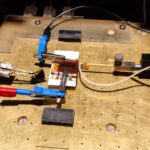

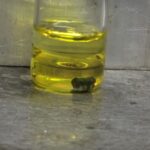
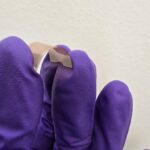
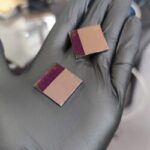
Research team: Prof. Simona Binetti (Full Professor), PhD Vanira Trifiletti (Assistant Professor), PhD Giorgio Tseberlidis (Assistant Professor), Elisa Fabbretti (PhD student)
- Fabbretti, E.; Husien, A. H.; Patidar, R.; Valadez-Villalobos, K.; McGettrick, J.; Amighini Alerhush, A.; Parvazian, E.; Davies, M. L.; Watson, T.; Minotto, A.; Tseberlidis, G.; Sassella, A.; Trifiletti, V.; Binetti, S. “Enhancing the stability of inverted perovskite solar cells through Cu2ZnSnS4 nanoparticles hole transporting material” Sustainable Energy & Fuels 2025, 9 (6), 1486-1497.
- Trifiletti, V.; Massetti, M.; Calloni, A.; Luong, S.; Pianetti, A.; Milita, S.; Schroeder, B. C.; Bussetti, G.; Binetti, S.; Fabiano, S.; Fenwick, O. “Bismuth-Based Perovskite Derivates with Thermal Voltage Exceeding 40 mV/K” J Phys Chem C 2024, 128 (13), 5408-5417.
- Trifiletti, V.; Luong, S.; Tseberlidis, G.; Riva, S.; Galindez, E. S. S.; Gillin, W. P.; Binetti, S.; Fenwick, O. “Two-Step Synthesis of Bismuth-Based Hybrid Halide Perovskite Thin-Films” Materials 2021, 14 (24), 7827.
- Trifiletti, V.; Asker, C.; Tseberlidis, G.; Riva, S.; Zhao, K.; Tang, W.; Binetti, S.; Fenwick, O. “Quasi-Zero Dimensional Halide Perovskite Derivates: Synthesis, Status, and Opportunity” Frontiers in Electronics 2021, 2 (16).
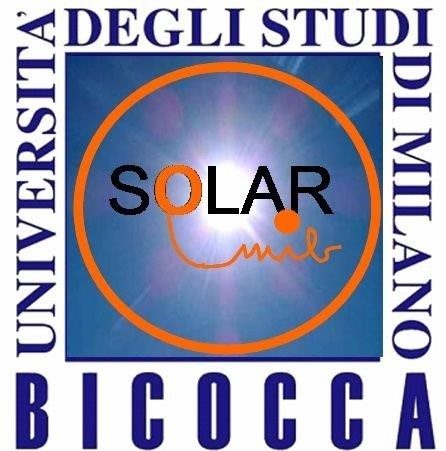
 '
'